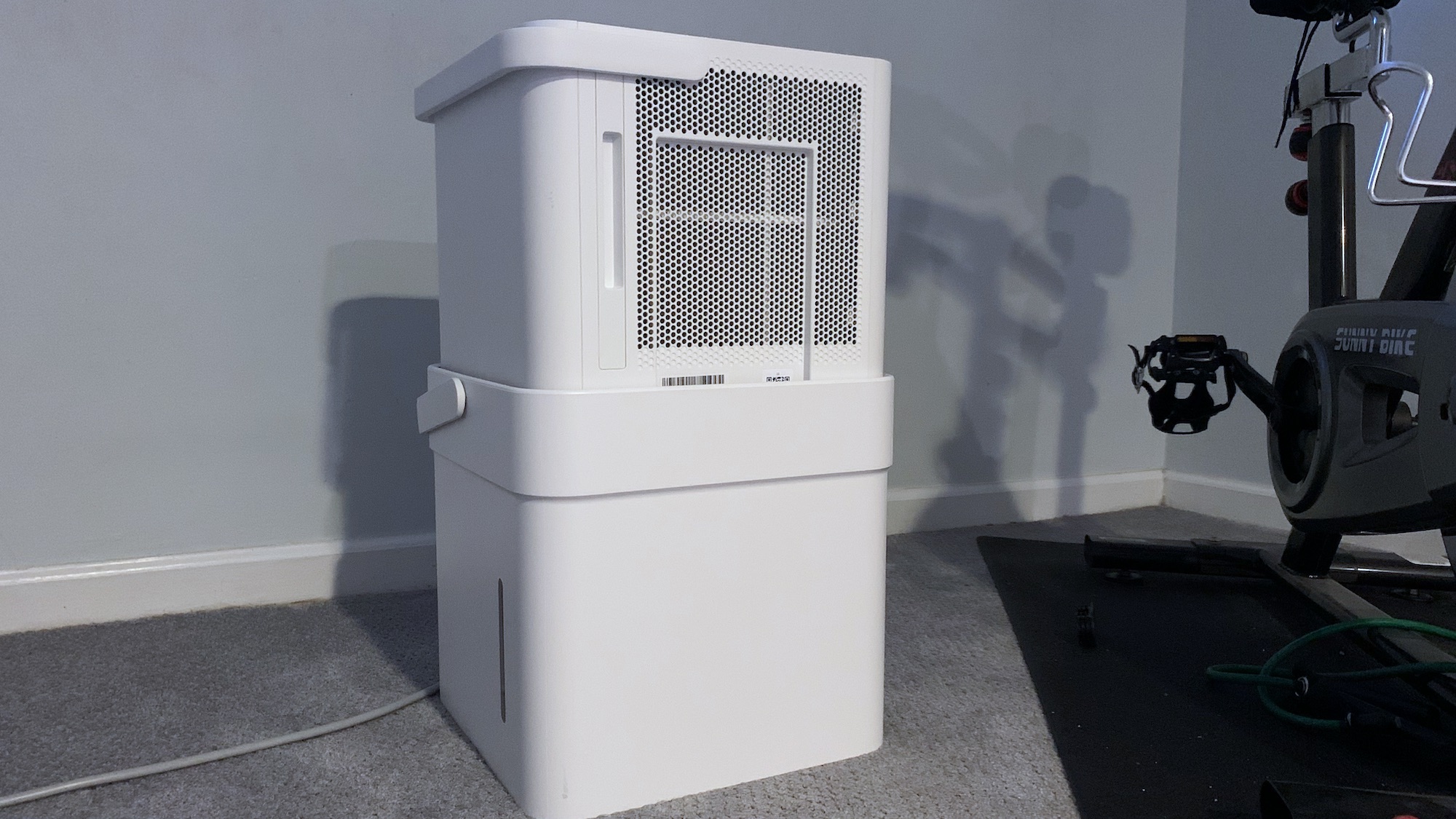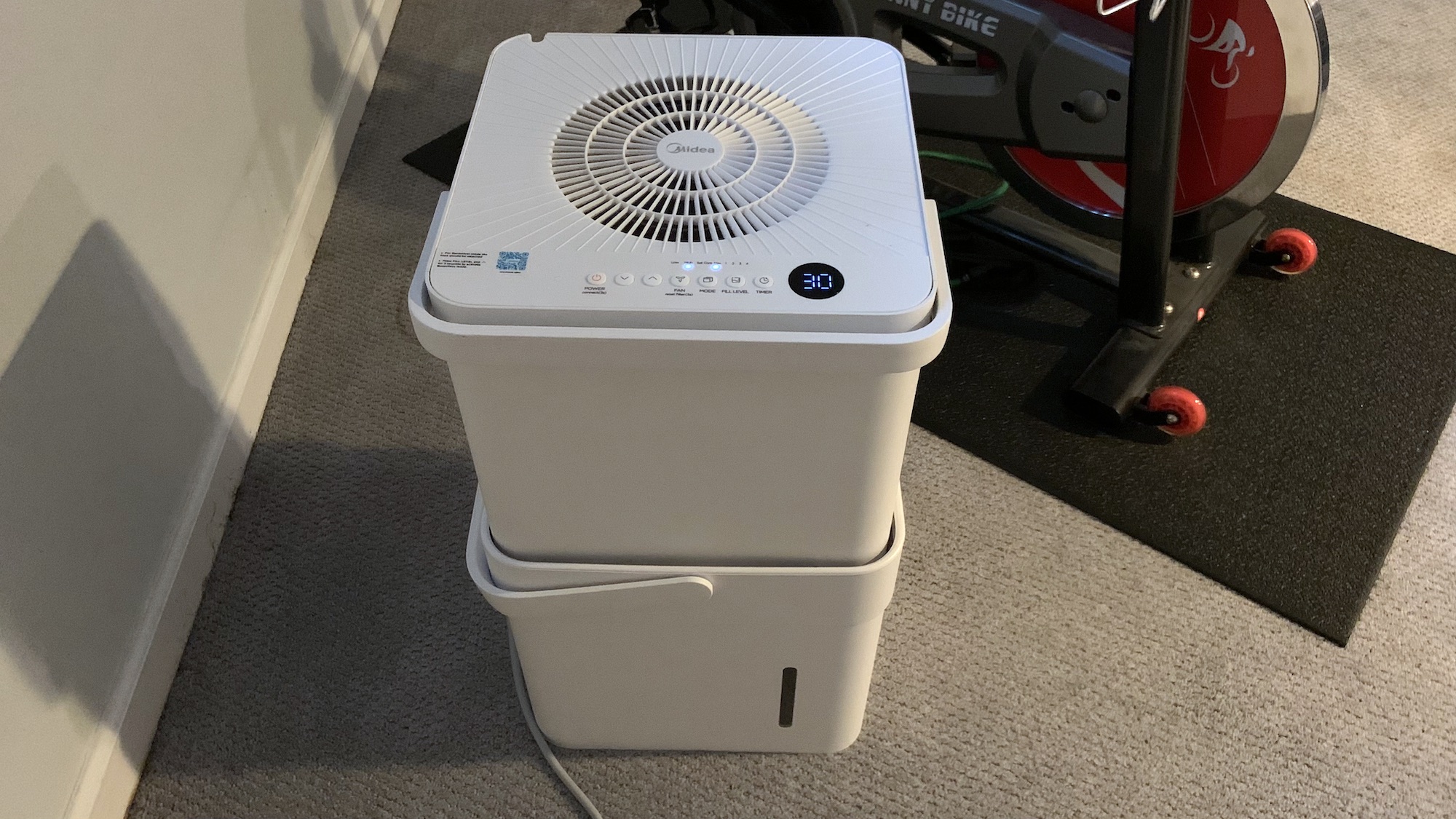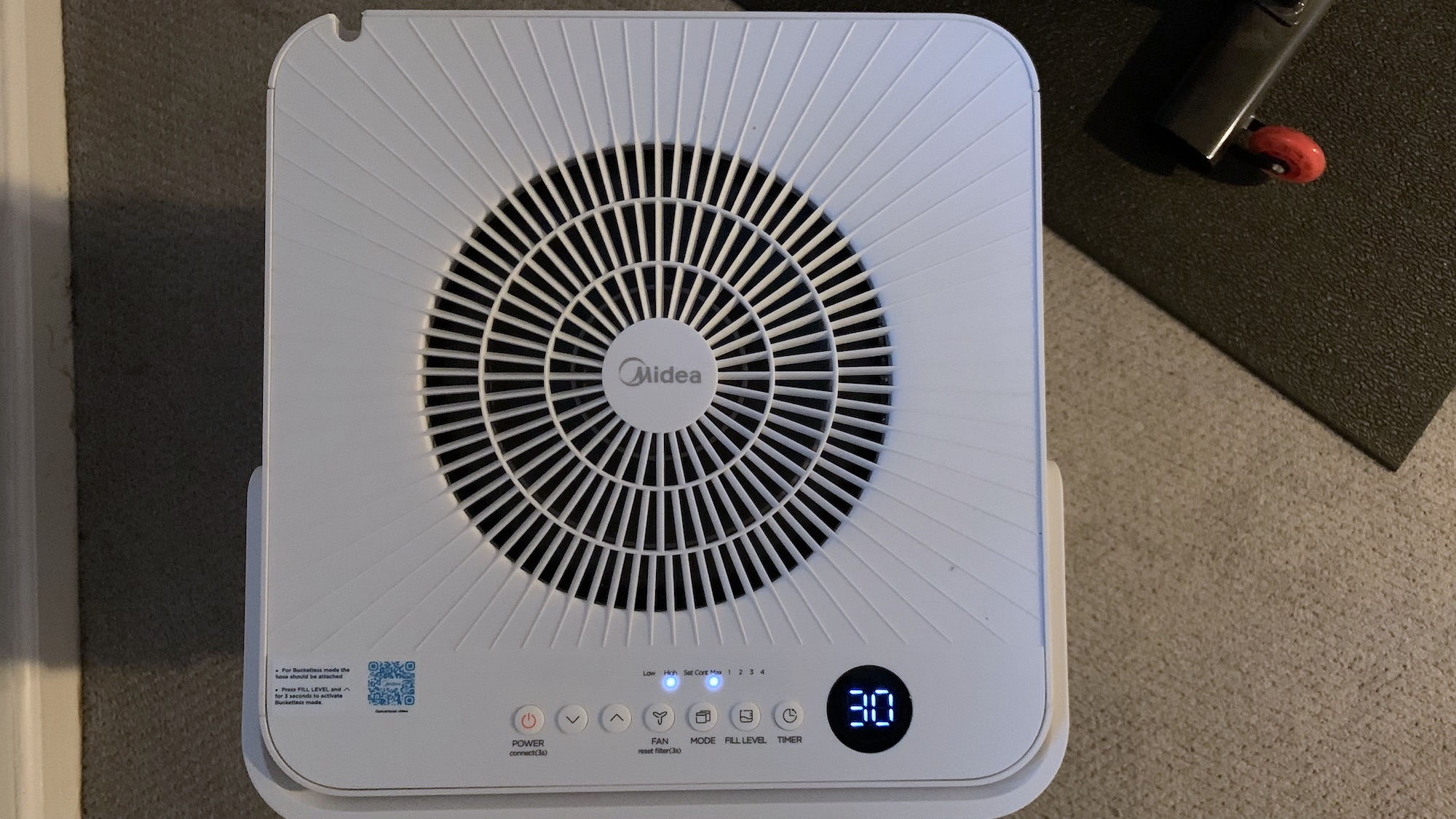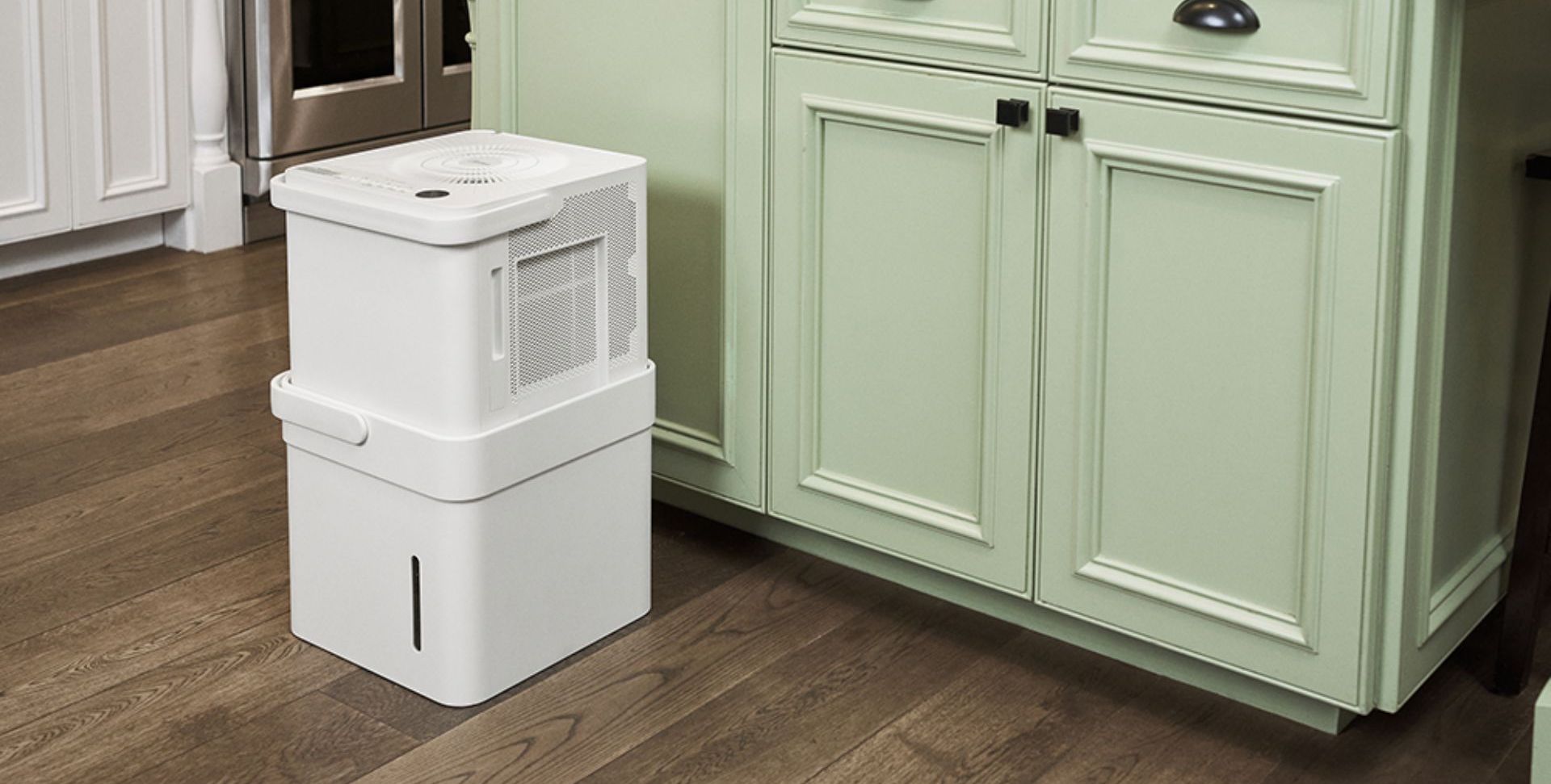Tom's Guide Verdict
The Midea 20 pint cube dehumidifier is effective at removing moisture from the air, and it’s very easy to empty.
Pros
- +
Easy to empty
- +
Intuitive controls
Cons
- -
App lacks two-factor authentication
Why you can trust Tom's Guide
In late August, the remnants of hurricane Ida ripped through our town, flooding businesses, dragging away cars, and causing millions of dollars in damages. Among those affected was my friend, whose finished basement took on water. It could have been worse: he had less than an inch, whereas others’ had their entire basements submerged.
I was in the middle of testing the Midea 20 pint cube dehumidifier, and since my basement was relatively unscathed, I lent it to my friend to help dry out his home.
The Midea helps solve a problem common to many dehumidifiers: Just how the heck do you get rid of all the water it collects? Ingeniously, the Midea’s lower half turns into a large bucket with a handle, letting you easily dispose of any water it pulls out of the air. It’s also easy to control using your smartphone or Alexa. Read the rest of our Midea 20 pint cube dehumidifier review to see how well it performed.
Midea 20 pint cube dehumidifier: Price and Availability
Size: 21.5 x 13.5 x 13.5 inches
Weight: 33.29 lbs
Capacity: 9.4 liters/2.5 gallons
The Midea 20-pint cube dehumidifier costs $178.99, and is available at WalMart. The company also sells a 35-pint model for $249, and a 50-pint model for $299. For most, the 20-pint model, which is designed to cover a 2,000-square-foot house, should be more than enough. The 35-pint model is meant for 3,000-square foot areas, while the 50-pint model can cover 4,500-square foot McMansions.

Midea 20 pint cube dehumidifier: Design
This is an elegantly designed dehumidifier. Its cube-shaped design looks modern, and won’t draw attention to itself. The top of the unit has a large fan, along with controls and a small display. By lifting up the main unit, you separate it from the base, which serves as a bucket that collects water. Both parts have a large, sturdy handle.
To set up the Midea for use, you simply lift the main section out of the base, turn it 90 degrees, and set it back down inside the base; two indentations hold the main part up, leaving room for water to collect below. A small window in the bucket lets you see just how full it is.
If you have a particularly humid environment, you can also connect a small drain hose to the bottom of the unit and have it empty out into a sink or wherever.
The controls on the unit are fairly clear, and let you control, among other things, the fan speed and mode settings. For example, you can set the dehumidifier to run continuously on High, or you can have it run until the humidity level drops to a certain level.
You can also set the fill level of the tank; despite its name, the 20-pint model can collect up to three gallons of water. However, three gallons of water weighs about 25 pounds; if you’d rather not lug that much liquid, you can set the dehumidifier to a lower fill level. When water reaches that level, the dehumidifier will automatically shut off.

Midea 20 pint cube dehumidifier: Performance
Summers in New Jersey are often hot and humid, so having a dehumidifier definitely helps, especially if you have allergies. I ran it on and off for a few weeks in my home, and loved how easy it was to empty: Just lift the top section off, then carry the bucket outside and dump it — it was ideal for watering the flowers.
The Midea 20 pint cube dehumidifier was put to the test following hurricane Ida; while it had been downgraded to a tropical storm, it still dumped more than 8 inches of rain in our town over just a few hours. While my house escaped without issue, my friend’s finished basement flooded, soaking his carpet.
The day after the storm, we set up the Midea 20 pint cube dehumidifier in his basement and let it run pretty much continuously for the next few days. Every morning, he would empty out the bucket. When filled with water, it’s predictably very heavy, but was easy to empty.
To be sure, the Midea wasn’t the only device we used to dry out his basement: I also lent him a shop vac to suck up more water, and he had a professional service come to finish the job. However, thanks to the dehumidifier and our other efforts, he didn’t need to replace his carpet.

Midea 20 pint cube dehumidifier: App
Connect the Midea to your Wi-Fi and the Midea smartphone app (Android/iOS), and you can control the dehumidifier from your phone, view humidity levels, and get an alert when the bucket is full. You can also change the dehumidifier’s settings here, too. It’s pretty basic, and pretty easy to use.
Within the app, Midea has its own voice-activated smart assistant to control the dehumidifier (or any other Midea smart appliance), but if you have it connected to Alexa, this feels pretty redundant.
However, I wish the company would add two-factor authentication to its app.
Midea 20 pint cube dehumidifier: Verdict
I hope none of you reading this has to deal with a flooded basement or the prospect of thousands of dollars of property damage. While the Midea dehumidifier — or any dehumidifier — shouldn’t be the only recourse in the event of a flood, it performed well when helping out my friend, and for more typical scenarios, should work just fine. What’s more, its design makes it very easy to empty, and the smart controls are also very handy when you want to monitor it from afar. What else could you want out of a smart dehumidifier?

Michael A. Prospero is the U.S. Editor-in-Chief for Tom’s Guide. He oversees all evergreen content and oversees the Homes, Smart Home, and Fitness/Wearables categories for the site. In his spare time, he also tests out the latest drones, electric scooters, and smart home gadgets, such as video doorbells. Before his tenure at Tom's Guide, he was the Reviews Editor for Laptop Magazine, a reporter at Fast Company, the Times of Trenton, and, many eons back, an intern at George magazine. He received his undergraduate degree from Boston College, where he worked on the campus newspaper The Heights, and then attended the Columbia University school of Journalism. When he’s not testing out the latest running watch, electric scooter, or skiing or training for a marathon, he’s probably using the latest sous vide machine, smoker, or pizza oven, to the delight — or chagrin — of his family.

